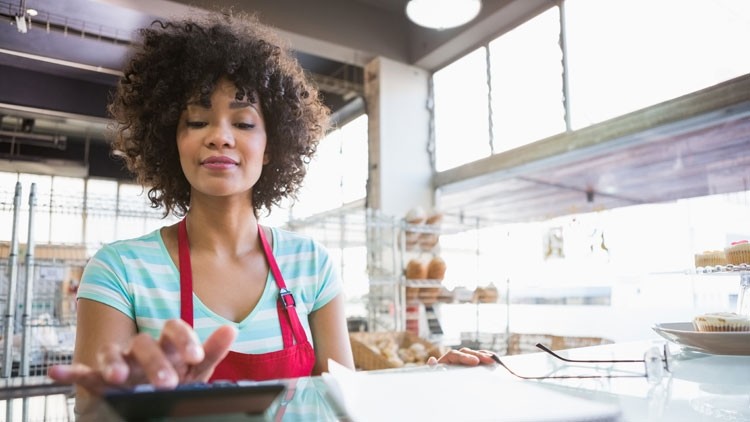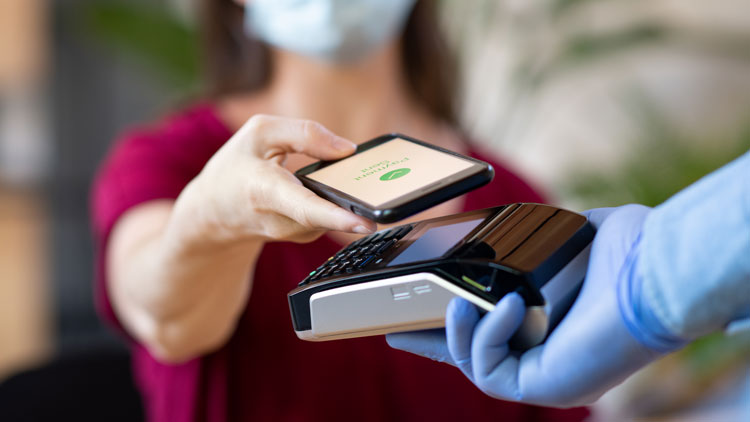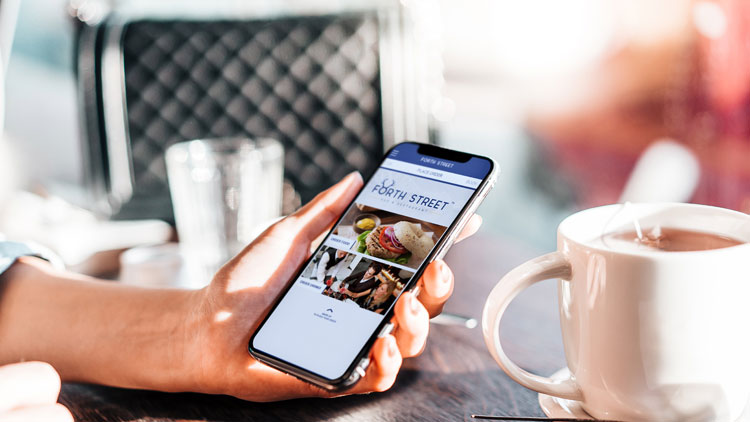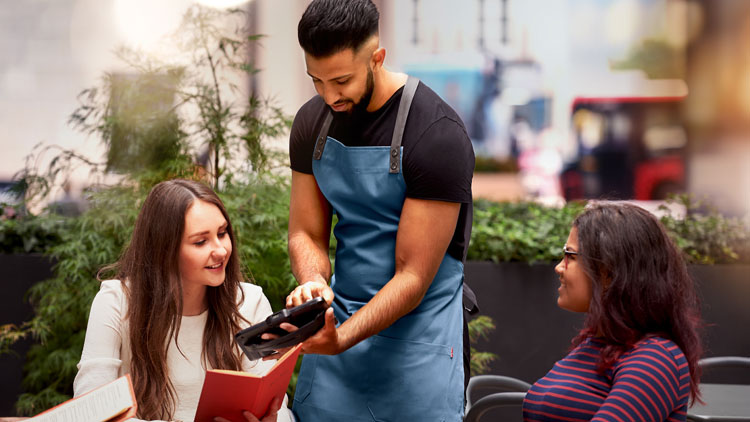How the pandemic is shaping the future of EPOS

The way restaurants operate now, compared to how they did little more than six months ago, is stark. If someone had said back in January that before the end of the year guests would no longer be allowed to cram in cheek by jowl, waiters would be required to wear face masks, and the collection of customer details would be compulsory, it’s unlikely anyone would have believed them. Margins have become even tighter; competition remains fierce; and the economic outlook has never felt so uncertain.
Adapting to this ever-changing landscape, where rules and regulations can change at a moment’s notice, isn’t easy. As such, finding quick and effective solutions has been key to helping businesses keep their heads above water, with many turning to their EPOS suppliers for answers.
“It’s not enough to just have a great EPOS system on the market anymore,” says Tom Knibb, EPOS product sales specialist for The Access Group.
“Right now, customers are judging us on how good our integrations are as much as our ability to process sales and manage stock.”
Existing customers, Knibb says, who were previously working with an older, legacy EPOS systems, have sought to invest more extensively in top-of-the-range tech, both to reduce staff counts and allow them to adapt to situations more readily.
“When restaurants need to pivot suddenly to delivery, or table service only, they need a system that can manage those changes. You see so many with limited integration systems, and what they actually need now is something that offers a good, solid base and can be adapted quickly.
“[At Access] we’ve been quite lucky in the sense that we have an EPOS system that offers high-quality integration, so we can meet most of those requirements.”
Demand for delivery
Offering fast, flexible EPOS solutions for its customers has been key to Access’ response, say Knibb; particularly when it came to adopting a delivery-focused model while the lockdown was ongoing.
“We partner with the leading delivery aggregators already, but companies wanted their own white label in order to reduce their transaction costs,” he explains. “Thankfully, by partnering with a third party that were able to integrate with our system, it was something we were able to put out very quickly.”
The delivery sector was already booming prior to the Coronavirus crisis. According to Statista’s Food Delivery and Takeaway Market Report, the market value of food service delivery increased from £8.1b to £8.5b between 2018 and 2019.
Online food orders were expected to show an annual growth rate of 6.5%, resulting in a projected market value of £5,974m by 2024. But the profound changes in the marketplace and shifts in customer behaviour caused by the pandemic is likely to accelerate this growth.
A greater focus on delivery is certainly something James Humble, commercial director for Tevalis, has seen his customers embrace.
“Delivery solutions have become a key area of consideration for many,” he says. “During the original lockdown, a lot of customers were in panic mode. The message from the Government was ‘look, you’re closed, but if you have a kitchen you can still retain some sort of revenue stream’.
“We were fortunate that prior to lockdown we created an integration with a company called Deliverect; a platform that enables teams to manage all delivery channels from one place. During the three months of the lockdown we onboarded between 70 and 80 new businesses that wanted to set up delivery services, which equated to 150-odd sites, and that was because we had those online ordering capabilities in place.”
The rise of order and pay
Alongside the growth in delivery, Humble says a key area of EPOS development as a result of the pandemic is in the use of order and pay apps, which allow diners to access menus, place orders, and settle bills from their smart phone; something that has become particularly prevalent since it became mandatory for restaurants to operate table service only.
“We went out and actually acquired the intellectual property of an order and pay product, and then launched that into our customer base so that it could integrate with their EPOS system and ensure they were able to continue trading,” says Humble, explaining that he believes the use of such technologies is only going to become more dominant in the months and years to come.
“What we’re seeing right now is a change in culture. The rise of order and pay app technology has just accelerated and in time it will just become the norm. We’re seeing restaurants that wouldn’t have even considered using this technology before start to embrace it. If you’re an independent operator stuck with an old cash register and can’t operate order and pay, you’re not going to survive.”
Tim Chapman, sales director for Zonal, says the pandemic has led to an acceleration of three to five years in the usage and demand of order and pay. The platform Zonal uses to accept orders from app and web interfaces, for example, is now receiving 40-times the number of orders it was receiving on average prior to the pandemic.
Like Humble, Chapman believes order and pay is very much here to stay.
“The avalanche that we saw at the end of March and beginning of April was unprecedented,” he says. “All of the emphasis went on to how people could order through app and web pages.”
Chapman believes that this growth doesn’t stem necessarily from hospitality operators suddenly deciding that order and pay was a good idea – the technology, after all, has been around in some form for a few years now. No, what’s changed is the consumer demand in being able to order their meal remotely.
“The systems are so slick, and the customer experience remains positive, which I think some had not expected.”
Chapman describes the rise of order and pay as a win-win for customers and for hospitality operators, citing Zonal data that suggests people who use apps for ordering have a higher-than-average basket spend.
“Of course, it doesn’t make up for the huge losses businesses have faced as a result of this crisis, but in looking to revenue generation in the future, there’s some real positive that can come from this,” he says.
Flexibility and integration
Tim Brown, vice president of global sales engineering for Oracle Food and Beverage, believes another positive to come from the pandemic is how it has challenged operators to look at their businesses differently.
“Good things have come out not just from a technological standpoint, but also in terms of menu design - looking at different dishes and working out what gives you more profit,” he says.
“For us, when it’s come to EPOS solutions during this crisis, it’s all been about offering flexibility and integration. Take the Eat Out to Help Out scheme as an example. We were able to turnaround an automated campaign on the tills, which was then deployed to our customers, in a day. Flexibility, ease of use and turnaround has been key.
“Going forward, we have to be aware that this virus is something we’ll have to live with and be able to react quickly to. It’ll become more points of service less points of sale, and operators will be looking for consistency in the centre.”
As has always been key to EPOS, the ability to be able to integrate with different technologies continues to be of significant importance.
“There’s a shift towards having consistency as well as connectivity,” says Brown. “If your POS is your end point, and you run out of something, you need a quick way to update that, which can be a problem if you’re using disparate systems that don’t interact properly with each other.”
One key area of change, particularly as a result of the rise of order and pay apps, is the perspective decline of the till itself.
“Something we’ve discussed a lot recently is around the physical till,” explains Humble. “The traditional requirement for EPOS is to have many POS systems, but with the emergence of mobile ordering and order and pay, they need a dedicated central pulse system, but they don’t need all these waiter stations.
“So what we’re seeing at the moment is the capex investment per site in tech is going down. Instead, we’ve focused on growing our number of integrated partners, which has grown from 60 to more than 100 in the space of eight months.
“The one thing about these new app technologies is that they rely on EPOS, because without that there’s no communication. So it’s been fundamental that we make sure we get our core software internally stabilised and reliable with the right level of access and API (application programming interface) messaging.
“The focus going forward is on improvements of API; accessing more partners and future integrations; and having a wider product section to cover a potential reduction in till numbers.”
The Insider: Henry Seddon, managing director of Access Hospitality
What should restaurants consider when choosing an EPOS system?
The best solutions integrate across many applications rather than being stand-alone. An EPoS system that integrates with order ahead, delivery, table reservation, payment, marketing, loyalty and engagement apps will simplify all stages of the operations process and provide a seamless customer journey. Streamlined interaction reduces admin time and provides comprehensive and efficient data analysis reports, effectively joining all the pieces of the operational jigsaw together. Access EPoS has at least 64 integrations available, enabling frictionless interaction and greatly enhancing the scope and power of the overall system.
What features should most restaurant be looking for in a modern EPOS system?
With so much uncertainty in the sector, flexibility and the option to scale an EPOS system are vital. Avoid an off the shelf solution which could restrict business agility and future growth choosing, instead, the versatility of proven technology that enables you to respond to changing needs. Restaurants should have an EPOS system that drives efficiencies for a more profitable business and provide exceptional guest experiences from one trusted source. With contactless interaction growing, order and pay at table capability will become more important as will the option to instal technology remotely.
What key advances should restaurants be aware of when it comes to EPOS systems?
Technology should simplify your operation and your working life, not make it more complicated. As the benefits of integration increase so does the value of running solutions with a single sign on, with EPOS at its core. Rather than having to sign into different products on separate systems, accessing them in one place changes your engagement with software and transforms productivity. Working seamlessly together, you have a frictionless way of working and immediate access to the right information across shared dashboards.















